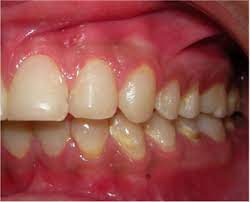If asked to name an autoimmune disorder, what would your answer be? Most of us would probably say AIDS — understandably, since it affects the lives of millions worldwide. But there’s another autoimmune disorder that affects approximately four millions of Americans — primarily women in their 40s. You might’ve heard of it before but never knew it was. It’s called Sjogren’s syndrome.
Sjogren’s syndrome is a chronic autoimmune disease in which a person’s moisture-producing glands are attacked by his or her white blood cells. Dry eyes and dry mouth are the “trademark” symptoms, but Sjogren’s disease can affect many other parts of the body, causing dysfunction of the kidneys, liver, pancreas and central nervous system among other organs.
If it occurs independently of other conditions, Sjogren’s syndrome is referred to as “Primary Sjogren’s.” When it occurs in conjunction with another connective tissue disease such as rheumatoid arthritis, it is called “Secondary Sjogren’s.”
Sjogren’s Symptoms
Sjogren’s symptoms manifest differently from person to person, affecting different parts of the body for each individual and varying in degree of discomfort. Some may feel only mild discomfort while others may be quite debilitated. Early diagnosis and treatment are the keys to preventing complications from Sjogren’s symptoms and improving quality of life.
Dryness is usually the most significant problem, occurring from head to toe:
Dry Eyes — This may be accompanied by a gritty or burning sensation.
Dry Mouth — This can have myriad effects from making it difficult to talk, chew and swallow to causing tooth decay or dry, peeling lips. A change in taste is also common, and the tongue may become sore or cracked.
Dry Nose — Recurrent nose bleeds may result from having a dry nose.
Dry Skin — Sjogren’s may cause vasculitis, inflammation of the blood vessels, or Raynaud’s phenomenon, a condition that turns the skin white.
Other common Sjogren’s syndrome symptoms include:
- Upset Stomach
- Chronic Fatigue
- Muscle and Joint Pain
Sjogren’s syndrome has also been linked to neurological problems, inhibiting the ability to concentrate and causing memory loss. This is often described as feeling like a “brain fog.” Liver problems may also be evident, such as hepatitis and cirrhosis (scarring of the liver). Numbness and tingling in the feet and recurring bronchitis are other warning signs.
Sjorgren’s Treatmement
Currently, there is no cure for Sjogren’s syndrome. However, certain prescription medicines and over-the-counter products can help ease certain symptoms like dry eyes, dry mouth and upset stomach. Avoiding salty, spicy and acidic foods, drinking plenty of water and chewing sugar-free gum can help with dry mouth. Rubbing Vitamin E oil on dry skin areas can ease itchiness and help heal cracks. And visiting the dentist regularly is critical for those with Sjogren’s, since the syndrome can exacerbate dental decay.
Before taking medications for Sjogren’s treatment, a positive diagnosis from a number of specialists is required. Due to the nature of the symptoms — not all symptoms are evident at the same time and many affect different parts of the body — blood tests, vision tests and dental tests are required; no single test can confirm a diagnosis. Rather, the combination of these tests is designed to measure criteria determined by experts to be indicative of Sjogren’s syndrome: dryness symptoms, changes in the mouth and eyes and other findings that affect the whole body. A rheumatologist is primarily responsible for managing Sjogren’s syndrome, but patients may also be treated by a number of specialists including opthalmologists, optometrists and dentists. Dentists typically take a series of tests to measure salivary flow and the functioning of salivary glands in addition to monitoring decay levels.

